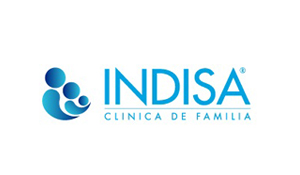Technology could make it much easier to utilize data to target advertising and marketing to customers probably to be thinking about particular services and products, but doing this may amplify redlining and steering dangers. From the one hand, the capability to make use of information for advertising and marketing can make it much simpler much less costly to attain consumers, including people who can be presently underserved. Having said that, it might amplify the possibility of steering or electronic redlining by enabling fintech firms to curate information for consumers centered on step-by-step data they live about them, including habits, preferences, financial patterns, and where. Therefore, without thoughtful monitoring, technology you could end up minority customers or customers in minority communities being offered various information and potentially also different provides of credit than many other customers. As an example, a DOJ and CFPB enforcement action included a loan provider that excluded customers with A spanish-language choice from specific charge card promotions, regardless of if the customer came across the advertising’s qualifications. 40 a few fintech and big information reports have actually highlighted these dangers. Some relate right to credit, as well as others illustrate the wider dangers of discrimination through big information.
- It had been recently revealed that Twitter categorizes its users by, among many other facets, racial affinities. A news company surely could buy an advertisement about housing and exclude minority affinities that are racial its market. 41 this kind of racial exclusion from housing adverts violates the Fair Housing Act. 42
- A magazine stated that a bank utilized predictive analytics to find out which bank card offer to exhibit customers whom visited its web web site: a card for many with “average” credit or a card for those of you with better credit. 43 The concern listed here is that a customer may be shown a subprime item centered on behavioral analytics, although the consumer could be eligible for a prime product.
- A media investigation showed that consumers were being offered different online prices on merchandise depending on where they lived in another instance. The rates algorithm were correlated with distance from the rival store’s physical location, nevertheless the outcome ended up being that customers in areas with reduced average incomes saw greater charges for similar services and products than customers in areas with greater typical incomes. 44 likewise, another news research unearthed that A sat that is leading course’s geographical prices scheme meant that Asian People in the us had been very nearly two times as probably be provided a greater cost than non-Asian People in america. 45
- A report at Northeastern University discovered that both electronic steering and digital cost discrimination had been occurring at nine of 16 stores. That suggested that different users saw either yet another group of items as a consequence of the exact same search or received various costs on a single items. For a few travel items, the distinctions could convert to a huge selection of bucks. 46
The core concern is the fact that, in place of increasing use of credit, these advanced advertising efforts could exacerbate current inequities in usage of economic services. Therefore, these efforts must certanly be very very very carefully evaluated. Some well- founded recommendations to mitigate steering danger may help. For instance, loan providers can make certain that whenever a customer pertains for credit, she or he is offered the very best terms she qualifies for, no matter what the marketing channel utilized.
Which individuals are assessed aided by the information?
Are algorithms utilizing nontraditional information used to all the customers or just those that lack old-fashioned credit records? Alternate information areas can offer the possible to enhance usage of credit to consumers that are traditionally underserved however it is feasible that some customers might be adversely impacted. As an example, some customer advocates have expressed concern that the application of energy payment data could unfairly penalize low-income customers and undermine state consumer defenses. 47 especially in cold temperatures states, some consumers that are low-income fall behind on the bills in winter  season when costs are greatest but get caught up during lower-costs months.
season when costs are greatest but get caught up during lower-costs months.
Applying alternative algorithms just to those customers that would otherwise be rejected based on conventional requirements may help make sure the algorithms expand access to credit. While such chance that is“second algorithms still must conform to reasonable lending along with other guidelines, they might raise less issues about unfairly penalizing customers than algorithms which are placed on all candidates. FICO makes use of this process in its FICO XD rating that depends on data from sources except that the 3 biggest credit agencies. This alternate score is used and then customers that do not need sufficient information inside their credit files to create a old-fashioned FICO rating to deliver an extra opportunity for use of credit. 48
Finally, the approach of applying alternative algorithms simply to customers who otherwise be denied credit may get consideration that is positive the Community Reinvestment Act (CRA). Present interagency CRA guidance includes making use of alternative credit records for example of a forward thinking or lending practice that is flexible. Particularly, the guidance addresses making use of credit that is alternative, such as for instance utility or lease re payments, to guage low- or moderate-income individuals who would otherwise be rejected credit underneath the institution’s conventional underwriting requirements due to the not enough traditional credit records. 49
MAKING CERTAIN FINTECH PROMOTES A reasonable and clear MARKET
Fintech brings great advantages to customers, including convenience and rate. In addition may expand accountable and reasonable usage of credit. Yet, fintech is certainly not resistant to your customer security dangers which exist in brick-and-mortar monetary solutions and may potentially amplify specific dangers such as for example redlining and steering. While fast-paced innovation and experimentation can be standard running procedure into the tech world, in terms of customer financial services, the stakes are high when it comes to long-lasting economic wellness of customers.
Therefore, its as much as many of us — regulators, enforcement agencies, industry, and advocates — to ensure fintech trends and items promote a fair and clear monetary market and that the possibility fintech advantages are realized and shared by as numerous customers as you can.














Comentarios recientes